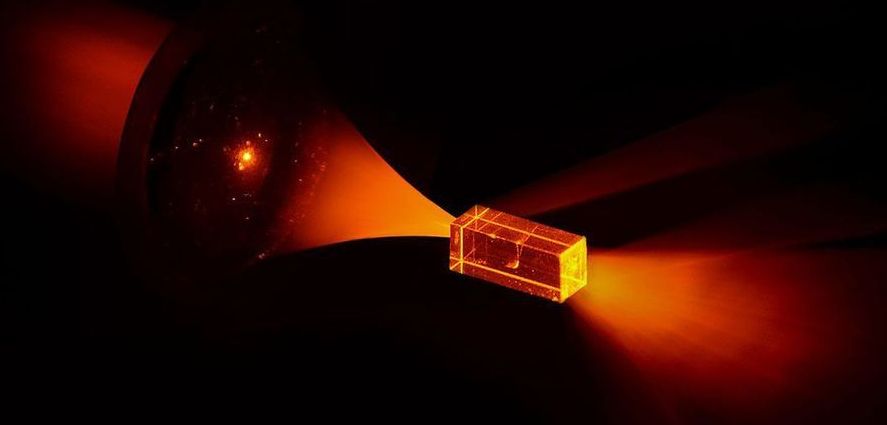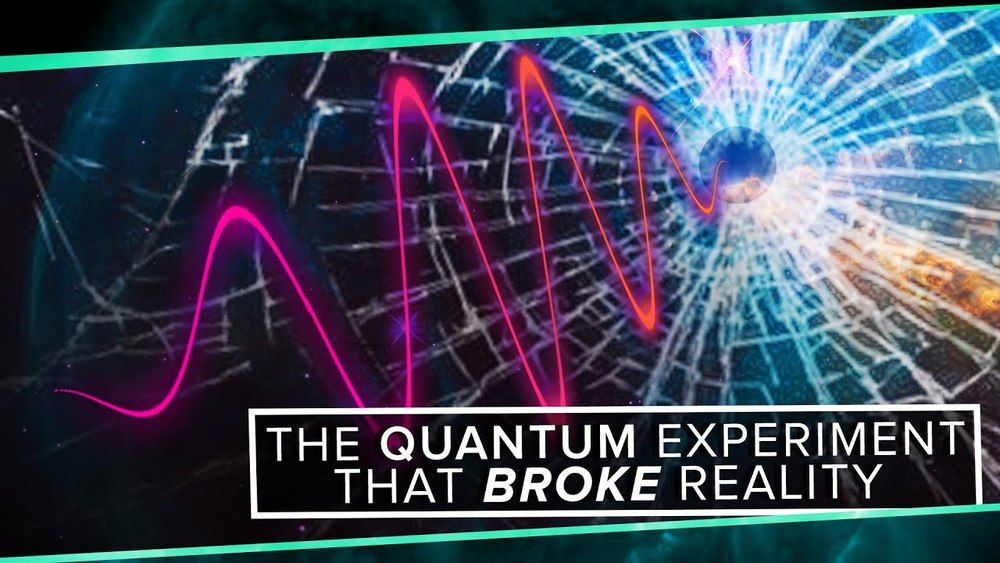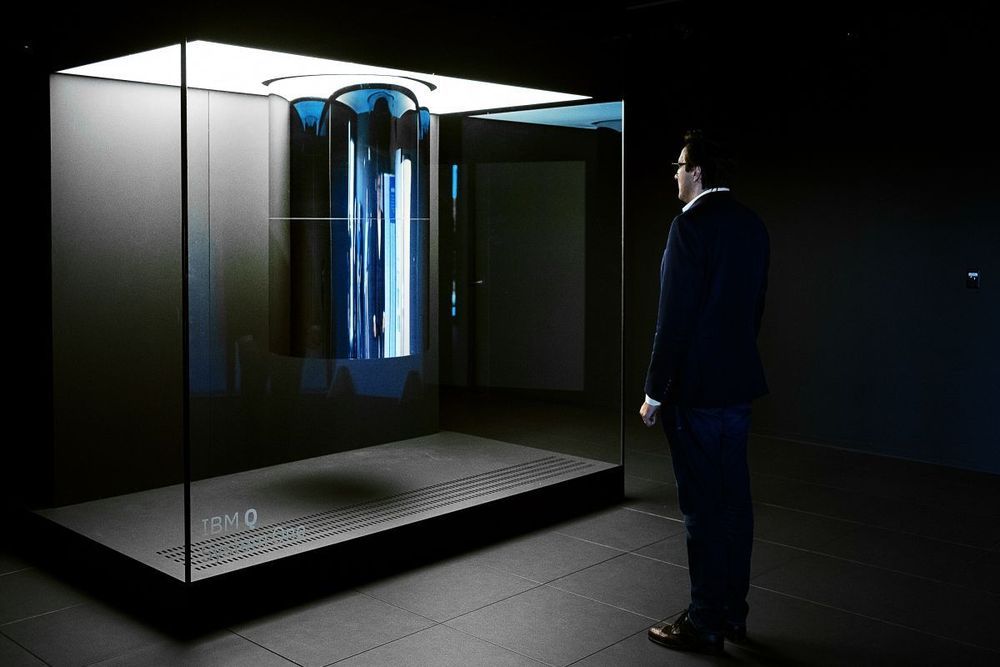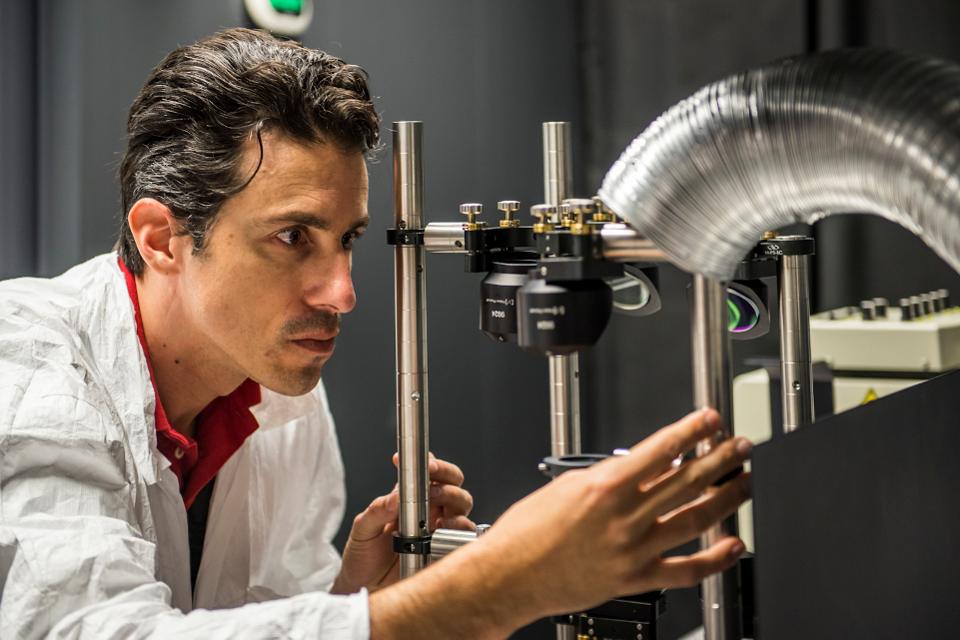The countries running “Operation Condor,” a campaign of assassinations in the 1970s, used devices made by Crypto AG, a company owned by the agency and West German intelligence.



O.o circa 2015.
Researchers from the Australian National University (ANU) and the University of Otago in New Zealand have created a prototype quantum hard drive that may fundamentally alter the realm of secure, long-distance data encryption. Using atoms of the rare-earth element europium embedded in yttrium orthosilicate (YSO) crystals, the scientists have shattered previous records for quantum information retention by creating a storage device capable of holding quantum state information for up to six hours at a time.
Quantum data encryption already offers the promise of intrinsically secure electronic data interchange over relatively short distances (up to around 100 km (62 mi) or so). However, this latest research may help enable a worldwide quantum-encrypted communications network by providing unprecedented storage capabilities and effectively negating the instability problems inherent in currently available technology.
“We believe it will soon be possible to distribute quantum information between any two points on the globe,” said Manjin Zhong, a researcher on the project from the ANU’s Research School of Physics and Engineering (RSPE). “Quantum states are very fragile and normally collapse in milliseconds. Our long storage times have the potential to revolutionize the transmission of quantum information.”

Overall, India’s science ministry, which oversees the department of science and technology; biotechnology; and scientific and industrial research, received 144 billion rupees in the 2020–21 budget, a 10.8% increase over promised funds in the 2019–20 budget.
Latest budget includes more than a billion dollars in funding for quantum computing, communications and cryptography.

Quantum computers, quantum cryptography and quantum (insert name here) are often in the news these days. Articles about them inevitably refer to entanglement, a property of quantum physics that makes all these magical devices possible.
Einstein called entanglement “spooky action at a distance,” a name that has stuck and become increasingly popular. Beyond just building better quantum computers, understanding and harnessing entanglement is also useful in other ways.
For example, it can be used to make more accurate measurements of gravitational waves, and to better understand the properties of exotic materials. It also subtly shows up in other places: I have been studying how atoms bumping into each other become entangled, to understand how this affects the accuracy of atomic clocks.

The ability to process qubits is what allows a quantum computer to perform functions a binary computer simply cannot, like computations involving 500-digit numbers. To do so quickly and on demand might allow for highly efficient traffic flow. It could also render current encryption keys mere speedbumps for a computer able to replicate them in an instant. #QuantumComputing
Multiply 1,048,589 by 1,048,601, and you’ll get 1,099,551,473,989. Does this blow your mind? It should, maybe! That 13-digit prime number is the largest-ever prime number to be factored by a quantum computer, one of a series of quantum computing-related breakthroughs (or at least claimed breakthroughs) achieved over the last few months of the decade.
An IBM computer factored this very large prime number about two months after Google announced that it had achieved “quantum supremacy”—a clunky term for the claim, disputed by its rivals including IBM as well as others, that Google has a quantum machine that performed some math normal computers simply cannot.
SEE ALSO: 5G Coverage May Set Back Accurate Weather Forecasts By 30 Years


Entanglement, once called “spooky action at a distance” by Einstein, is the phenomenon in which the quantum states of separated particles cannot be described independently. This puzzling phenomenon is widely exploited in the quantum physicist’s toolbox, and is a key resource for applications in secure quantum communication over long distances and quantum cryptography protocols. Unfortunately, entangled particles are easily disturbed by their surroundings, and their entanglement is readily diminished by the slightest interaction with the environment.
In a recent study published in the journal Physical Review X, an international team of physicists from Austria, Scotland, Canada, Finland and Germany have demonstrated how quantum entanglement can be strengthened to overcome particle loss or very high levels of noise, which are inevitable in real-life applications outside the laboratory. This strengthening is accomplished by departing from commonly used two-level quantum bits, or qubits. Qubits are bi-dimensional systems, the quantum analogue to the classical bit, with values zero or one. In this study, the researchers instead employed entanglement of systems with more than two levels. By entangling particles of light through their spatial and temporal properties, scientists have now observed the survival of quantum entanglement under harsh environmental conditions for the first time.
When it comes to distributing particles of light outside of a protected laboratory, the environmental conditions are identical to the tested ones. Therefore, the experiment is not only a proof-of-principle implementation, but is ready for long-distance quantum communication under real-world conditions. This new method could hence prove helpful for distributing entanglement in a future quantum internet.

O.o…
The communications system of Mexico’s oil giant Pemex is still suffering the lingering effects of a cyberattack that occurred earlier this month, sources from the company told Bloomberg.
A ransomware attack caused administrative operations at Pemex to grind to a halt on November 10, with the company announcing the resumption of work soon after, saying the actual attack had been prevented.
The attackers used the Ryuk ransomware, which specifically targets companies with annual revenues of between $500 million and $1 billion. The Ryuk ransomware gets dropped into a network by another malware and soon after begins encrypting files. Yet the encryption begins with a delay, which gives the attackers time to study their target and how much money they could extort from it.

Google has increased the maximum prize for its Android bug bounty program to $1 million for anyone who can compromise the Titan M security chip found in its Pixel phones. The top prize is for a “full chain remote code execution exploit with persistence” of the dedicated security chip. On top of that, there’s an additional 50 percent bonus if a security researcher is able to find an exploit on specific developer preview versions of Android, resulting in a potential prize of $1.5 million. The new rewards take effect starting today.
Introduced with 2018’s Pixel 3, Google’s Titan M security chip cordons off your smartphone’s most sensitive data from its main processor to protect against certain attacks. Google says the chip offers “on-device protection for login credentials, disk encryption, app data, and the integrity of the operating system.” Since its introduction, the chip has also been integrated with Android’s security key functionality where it’s used to store a person’s FIDO credentials. Suffice it to say, the integrity of the Titan M is an important element for the security of recent Pixel devices.

Law enforcement and technologists have been arguing over encryption controls for more than two decades. On one side are privacy advocates and tech bosses like Apple’s chief executive, Timothy D. Cook, who believe people should be able to have online communications free of snooping. On the other side are law enforcement and some lawmakers, who believe tough encryption makes it impossible to track child predators, terrorists and other criminals.
After years of on-and-off debate over nearly snoop-proof security, the industry is girding for new pressure from law enforcement around the world.